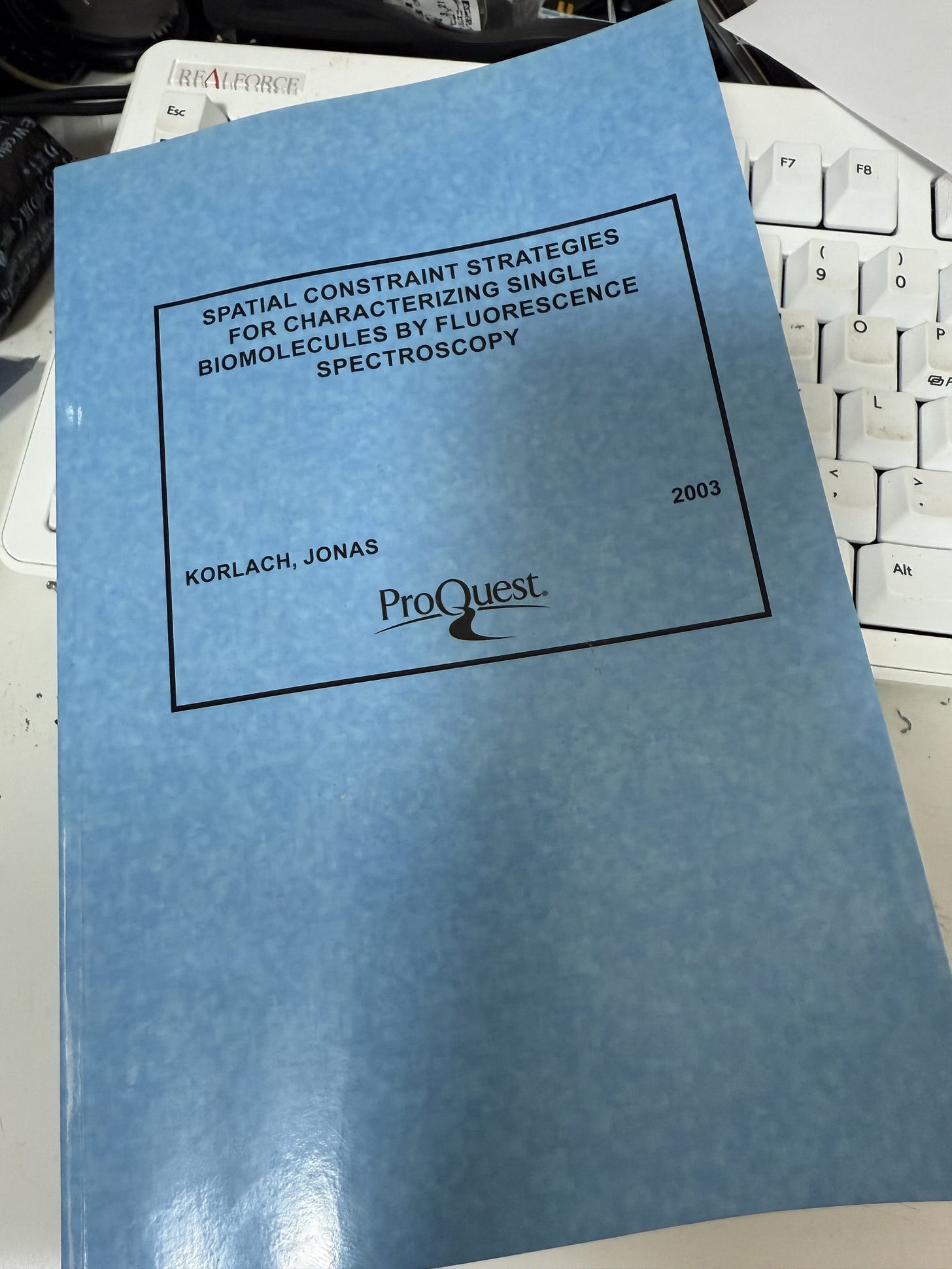No, not that kind of thesis… this kind of thesis:
Pacific Bioscience’s has one of the “cleanest” through lines from the original academic work to final implementation.
This is the exception rather than the rule. Both Solexa (now Illumina) and Oxford Nanopore started with very different ideas than those that finally went to market.
In Solexa’s case, they were a single molecule sequencing company until the acquisition of Manteia Predictive Medicine, which gave them clusters. Oxford Nanopore originally worked on an exonuclease based approach called BASE, not the stranded sequencing approach most are familiar with.
The PacBio story is different. They proposed a sequencing approach using a polymerase confined to a ZMW where the incorporation of fluorescent labels is monitored in real time and that’s what they shipped.
The early phases of this story play out in Jonas Korlach’s thesis. Jonas co-invented the SMRT approach and joined the company as an early employee. His 2003 thesis is predated by a year 2000 patent. In that patent they basically say “we’re going to stick a polymerase in a ZMW and watch it incorporate bases:
Jonas Korlach’s thesis then describes a very systematic approach to building that system, completing the following steps:
Making the ZMWs
Observing single fluorophores diffusing in and out of the detection window.
Showing that you can observe polymerase activity in the ZMW
Showing activity with labels cleaved on incorporation.
After this PacBio was formed. While I’m sure it wasn’t an easy journey, they built on this academic foundation and shipped a platform more or less similar to that described in Jonas’ Thesis.
While that thesis isn’t available online, I ordered a physical copy via Proquest ($150!).1
Let us go then, you and I, When the evening is spread out against the sky like a patient etherxized upon a table2 and review the academic foundations of one of sequencing most interesting companies…
Making The ZMWs And Watch Dye Diffusing
After the obligatory background, the thesis starts with device fabrication.




